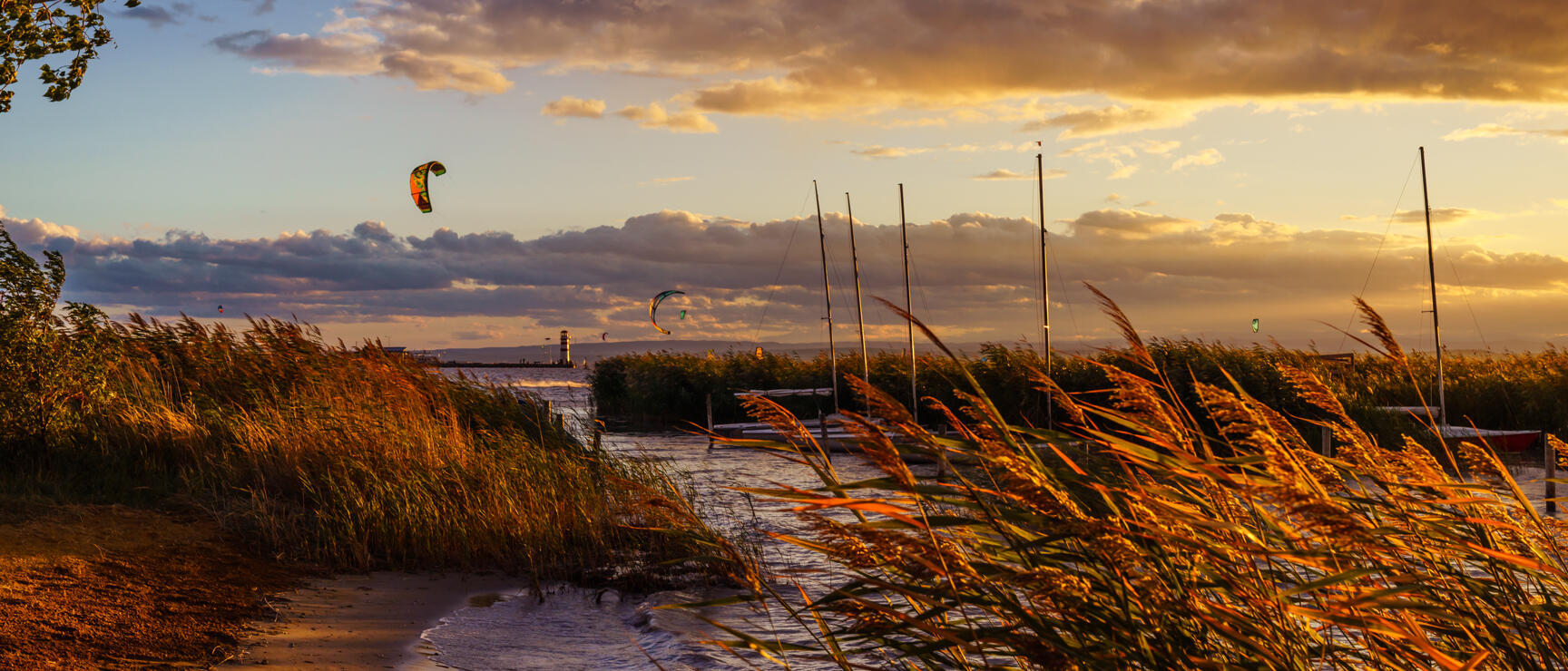
Lake Neusiedl
Swimming in a unique steppe lake
A Birdwatcher’s Paradise: The Magic of Lake Neusiedl
Lake Neusiedl is a unique steppe lake whose shallow, reed-fringed waters evoke a sense of vastness and tranquillity. Unlike Austria's alpine lakes, Lake Neusiedl captivates its visitors with an open, seemingly endless landscape, surrounded by gentle hills and vineyards. It’s a beautiful place—soft and serene. Here, holidaymakers experience a blend of nature and culture: Burgenland is a region renowned for its excellent wines, and the cosy lakeside restaurants are perfect for a relaxed sunset drink.
For those who prefer a more active holiday, the well-maintained paths are ideal for cycling, while sailing and windsurfing are popular with the often perfect wind conditions.
Birdwatching in the National Park
A rustling in the grass hints at its presence. Then, a white bird’s head with a jaunty crest appears, looking directly towards the spotting scope—a precise instrument that reveals every detail: it’s a lapwing, nesting every spring on the marshy meadows along the shores of Lake Neusiedl.
In the Neusiedler See-Seewinkel National Park, birdwatchers move gently and quietly. Silence, patience, and focus are key on these professionally guided birdwatching safaris. One natural spectacle after another unfolds here, and with the guidance of the skilled National Park rangers, there’s a good chance of spotting some of the 340 bird species that inhabit this Burgenland steppe lake—offering a diversity found nowhere else in Europe’s interior.
Bathing tips and lidos
Be active on Lake Neusiedl
Birdwatching on Lake Neusiedl
The most beautiful summer restaurants on Lake Neusiedl
Grapes thriving in Pannonian climate
The Burgenland Wine Routes
Burgenland's wine routes span approximately 14,000 hectares of vineyards. Although Burgenland is small in size, as Austria's second-largest wine region, it is truly impressive! This applies not only to its scale but also to the quality of its wines. What makes Burgenland's wines exceptional are the excellent soils, the hot, dry Pannonian climate, and the presence of Lake Neusiedl, which acts as a natural reservoir of warmth and humidity.
Find here more information about hiking routes in Burgenland.
Vineyards on Lake Neusiedl
If you're exploring Lake Neusiedl and enjoy fine wine, Burgenland is a must. Known for its passionate winemakers and exceptional Heurige, the region produces wines that reflect their origin, thanks to quality soil, climate, and winemaking skill.
This results in excellent white wines like Pinot Blanc, Chardonnay, and Welschriesling, along with full-bodied reds such as Blaufränkisch, Blau Zweigelt, blends, and Merlot.
6 excellent wineries
Tip: Pay a visit to the Wine Academy Austria in Rust!
Nature in its purest form
National Park Lake Neusiedl-Seewinkel
Salt pans, reed beds and incredible biodiversity – Neusiedler See–Seewinkel National Park is a landscape full of contrasts and surprises. To truly understand it, join a guided ranger tour.
On foot, experienced national park rangers lead visitors to hidden spots, share stories about migratory birds, wild cattle and rare plants – and help reveal the extraordinary in the seemingly ordinary. Tours start at the visitor centre in Illmitz – the ideal gateway to exploring this vast, peaceful steppe lake.